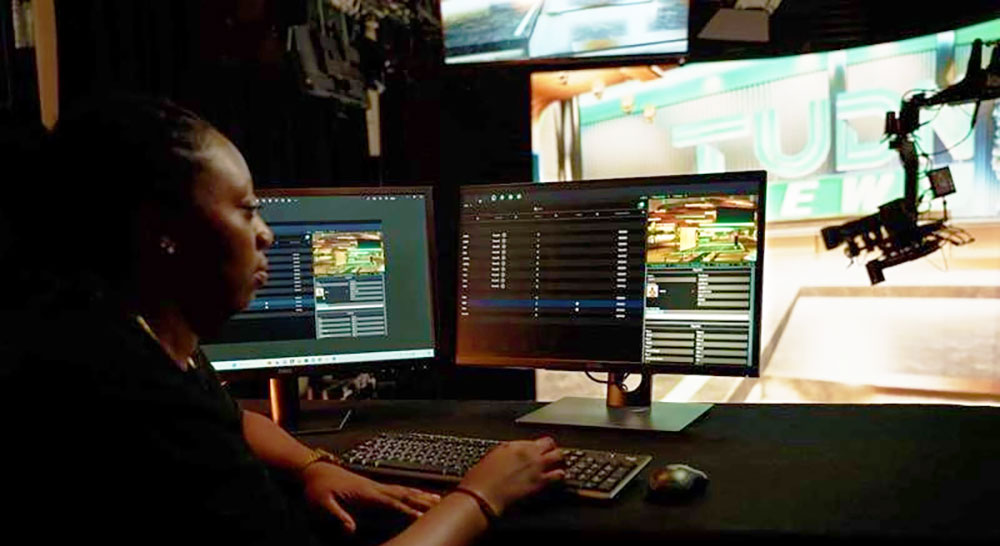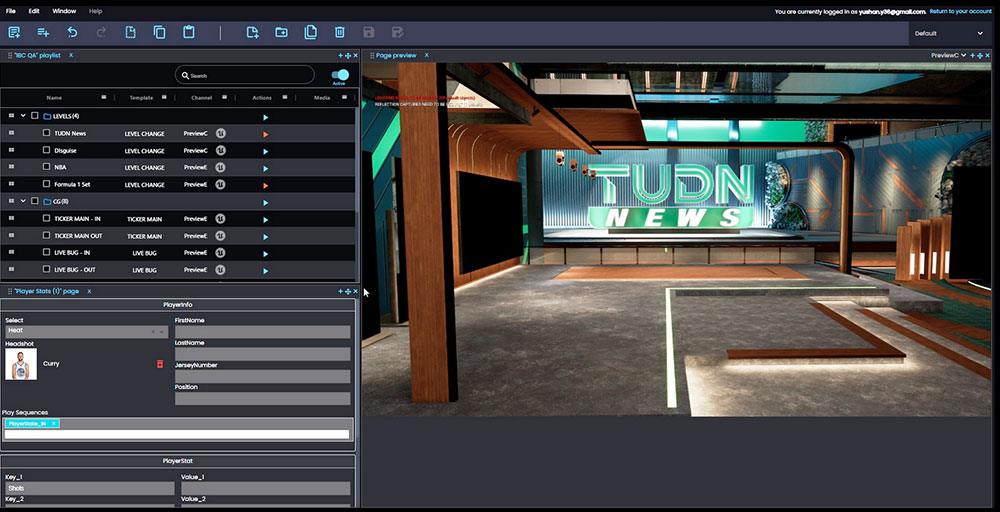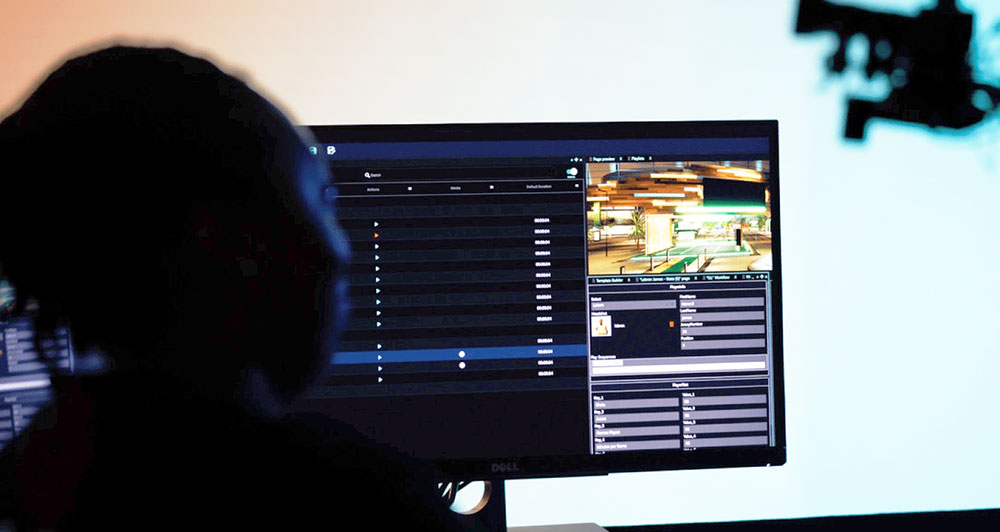Porta 2.3, 3D graphics control software for XR and AR productions, is now compatible with Unreal Engine 5.4’s Motion Design tools, dynamically altering visuals and content for LEDs.

Disguise has released Porta 2.3, the update to its software platform used to control and manage Unreal Engine graphics for XR and AR productions. Porta 2.3 is now fully compatible with the new Unreal Engine 5.4 and its Avalanche motion graphics tools, recently released as Unreal’s Motion Design Mode following its year-long beta stage.
Also, along with its original cloud-based format, Porta 2.3 is available to run offline, has a new UI and is better integrated with all of the Disguise servers.
The purpose of Porta is to make graphics elements and scenes built in Unreal Engine easier to manage when producing AR and XR projects. Because Unreal has a huge number and variety of tools, having a single, consistent broadcast workflow for all graphics requirements is an advantage for operators, simplifying the work of delivering dynamic real-time content to support live broadcast shows.
Unreal 5.4 Motion Design Mode
Unreal 5.4’s Motion Design Mode is a set of 3D motion graphics and 2D layer design tools specialised for motion graphics designers including 3D shapes, cloners, effectors, modifiers, animators and features for non-linear animations. It includes an enhanced Unreal world outliner that displays all of the elements in a scene in a hierarchical tree view, and can be searched. Elements can be selected and modified directly from the tree.
Working in live broadcast needs a high level of flexibility and often involves frequent last minute changes, which can be made in Porta instead of returning to Unreal. Users can create on-air compatible graphics in Unreal Engine 5.4, such as animating text, applying effects, using transitions and so on, and then control, visualise, schedule and edit their work directly from Porta’s purpose-built interface.

Integrated Live Broadcast
Porta integrates across the tiers of a broadcast production, including NRCS, to help departments collaborate on graphics. For instance, journalists, producers and directors can collaborate to create graphics within news room rundowns, which can then be played out directly from Porta without needing a specialist operator. Also, once operators have tailored their workflows, they can automate show operations with visual macros and scheduling widgets, without manual data entry, and colour-code their playlists and workspaces.
Although a cloud-native platform, Porta is no longer purely cloud-based. Porta 2.3 is available to run offline. Depending on their preferences, users can now manage, search and tag on-premise media assets for both online and offline use. The Porta software now integrates with all of the Disguise server hardware as well, and includes Automatic Media Clean-Up, a feature that manages all the media and makes it available across the user’s Disguise media server system, without manual intervention or copying media.
More Disguise, in More Places
According to Addy Ghani, Disguise’s Vice President of Virtual Production, Porta 2.3 is consistent with the company’s ongoing efforts to make Disguise software and hardware more affordable and, therefore, more accessible.
For instance, the VX 2+ server was introduced in April at NAB Show 2024 for medium-sized productions and studios, optimised for both pre-rendered and real-time video playback. It has only two 4K outputs but can still play back high-resolution real-time content at high bit depth and true colour fidelity. It supports 4K XR graphics compositing, with 40% over scan when used with a series of real-time render nodes and a 4K camera.

Also the Disguise RenderStream protocol for controlling third party realtime render engines, is now available as a software-only version. Network-based and highly scalable, it allows a studio to split up a large realtime render task among a chosen number of render PCs. RenderStream has traditionally been based on Disguise Rx render nodes, but as long as their hardware is qualified by disguise for use with RenderStream, this new software version can help studios control their costs.
About the new version of Porta, a wider spectrum of people involved in media production can make the shift to a Disguise XR workflow with confidence that they have the tools to handle the various challenges. Addy anticipates that Unreal’s Motion Design Mode is set to make a considerable impact among graphic artists working in broadcast, and Porta’s compatibility with Unreal Engine means that users will receive new tools as they are released, without manual integration.
On the creative side, Disguise’s Meptik creative services team is available to Porta 2.3 users for help in visualising stories for production, from concept design to final delivery. www.disguise.one




















